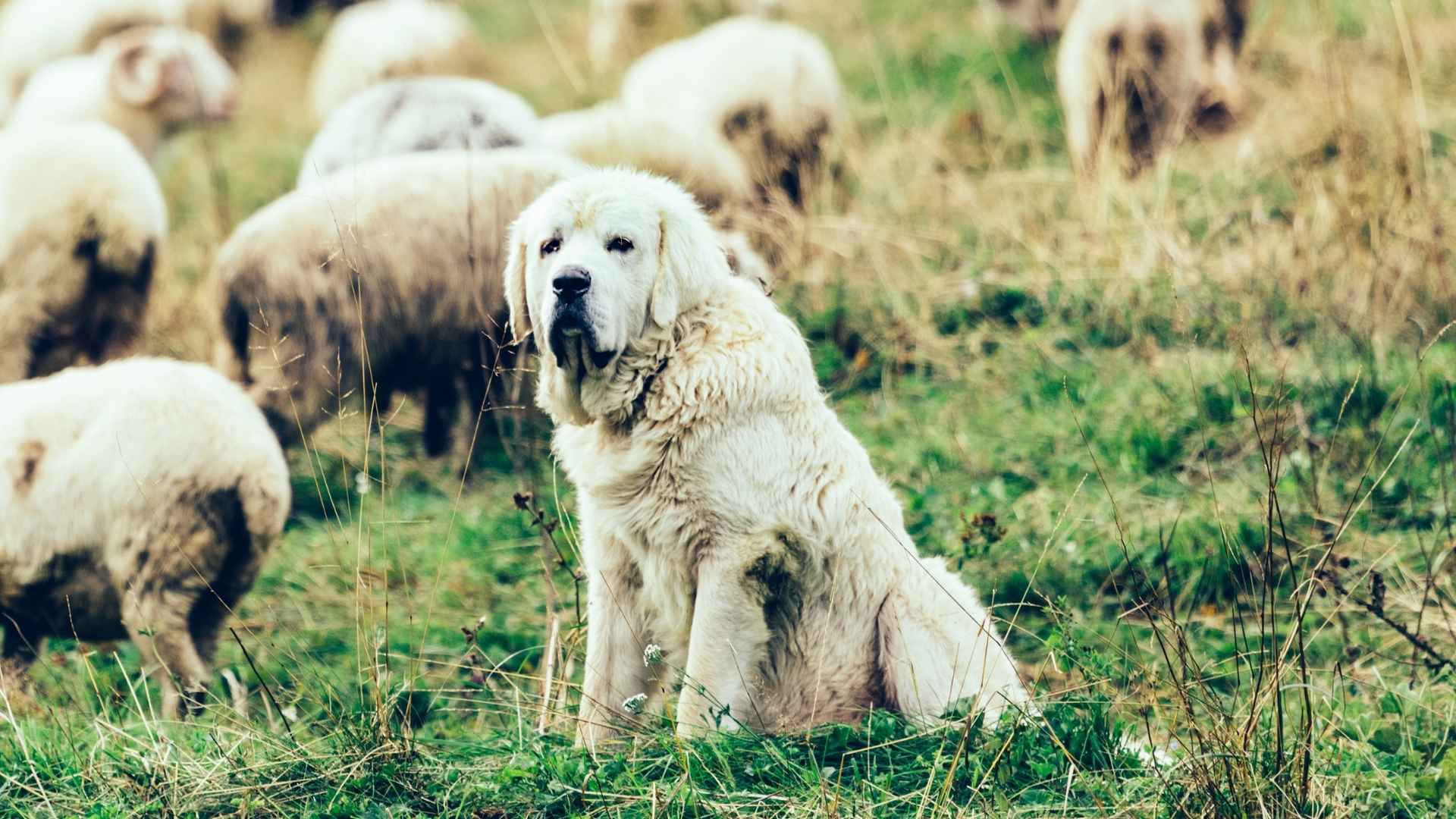Every rancher knows this: a fence will slow down a predator, but it won’t stop one. It can’t chase, it can’t fight, and it can’t think.
Your animals deserve more than a barrier—they need a guardian. Not just a dog that barks at shadows, but one that knows the difference between a breeze and a threat.
A companion that walks with the herd, sleeps among the sheep, and stands in the gap when danger comes close. These aren’t guard dogs—they’re guardians in the truest sense. They don’t protect because they’re told to. They protect because it’s who they are.
If you’ve ever watched the sun set over your land and felt that pang of worry deep in your gut, this article is your next step. Stick with us, because now we’re revealing the most reliable protectors in the animal world: the dog breeds that protect livestock day and night.
Dog Breeds That Protect Livestock
1. Great Pyrenees
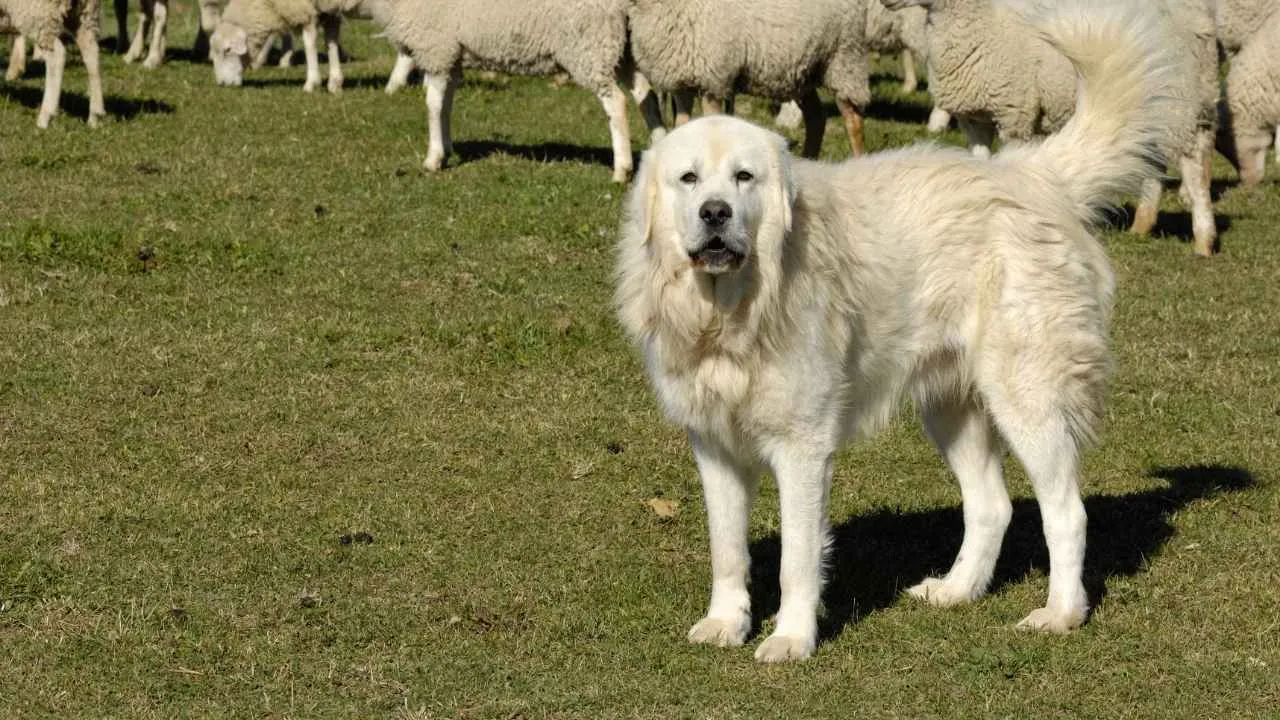
The Great Pyrenees is known for its quiet strength — it doesn’t bark unnecessarily but acts decisively when needed. It’s often seen lying motionless near its flock, watching everything. That stillness is part of its working style, not laziness.
Nighttime guardian instincts
This breed is most alert at night, when predators are more likely to strike. It naturally patrols boundaries and positions itself where visibility is highest. It works independently without needing human direction, even across large terrains.
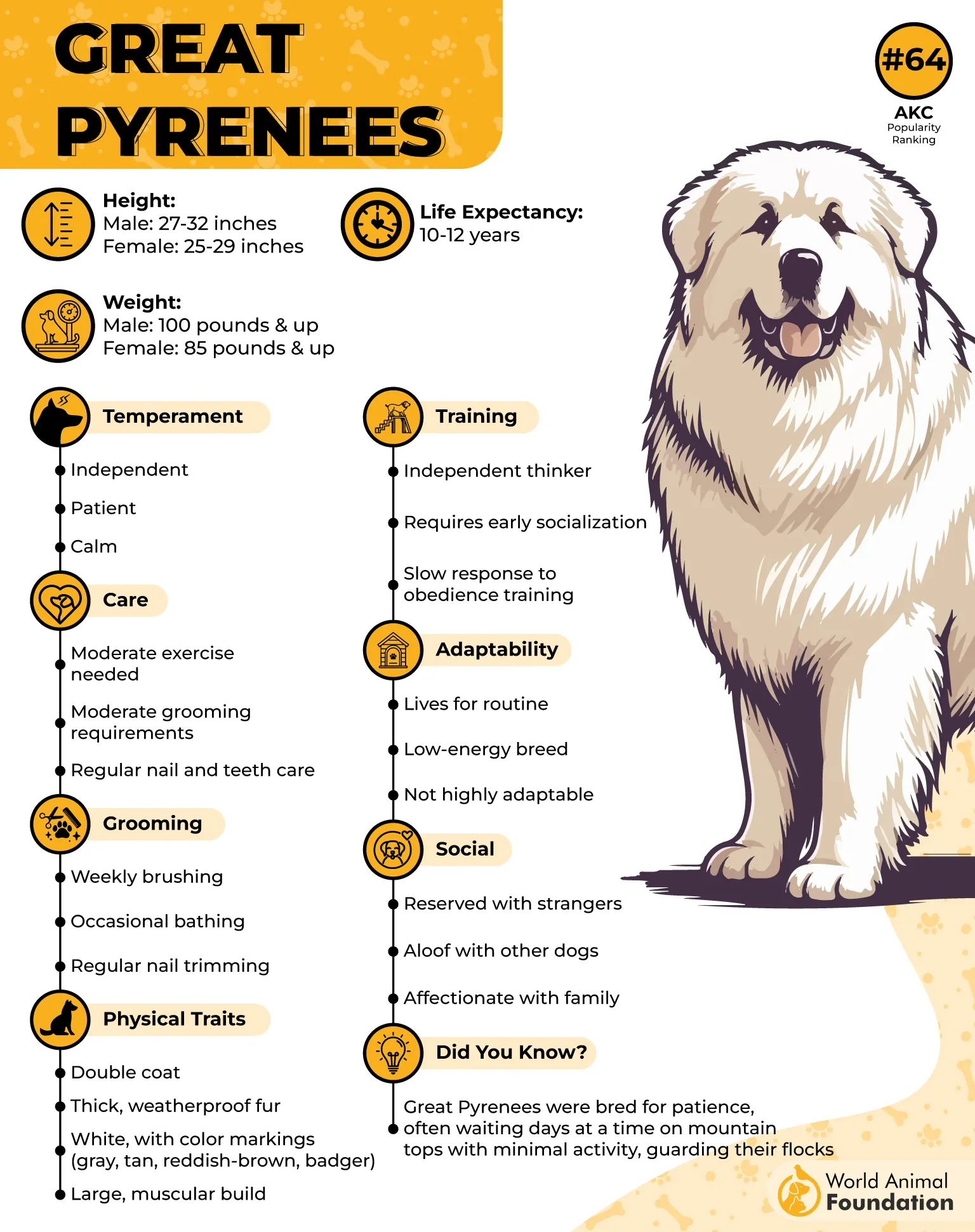
Deep bond with the flock
More than just a protector, the Pyrenees blends into the rhythm of herd life. It often positions itself between threats and the flock without any prompting. This breed is trusted by farmers who rely on livestock guardian dogs to work unsupervised.
Adapted for rough conditions
Its thick double coat protects it in snow, rain, and wind, making it reliable across all seasons, as stated in GPAC. Although originally bred in the Pyrenees Mountains, it adapts well to varied terrain and climates. It can also coexist peacefully with other animals on the farm.
2. Anatolian Shepherd Dog

The Anatolian Shepherd doesn’t just chase threats—it calculates them. It reads body language, distances itself from the flock, and responds only when necessary. This minimizes chaos and keeps protecting sheep from turning into a loud chase.
Impressive territorial awareness
This breed maps its land mentally and instinctively monitors invisible boundaries. It doesn’t patrol aimlessly—it positions itself where predators are most likely to approach. That natural perimeter control makes it a standout among protection dogs.
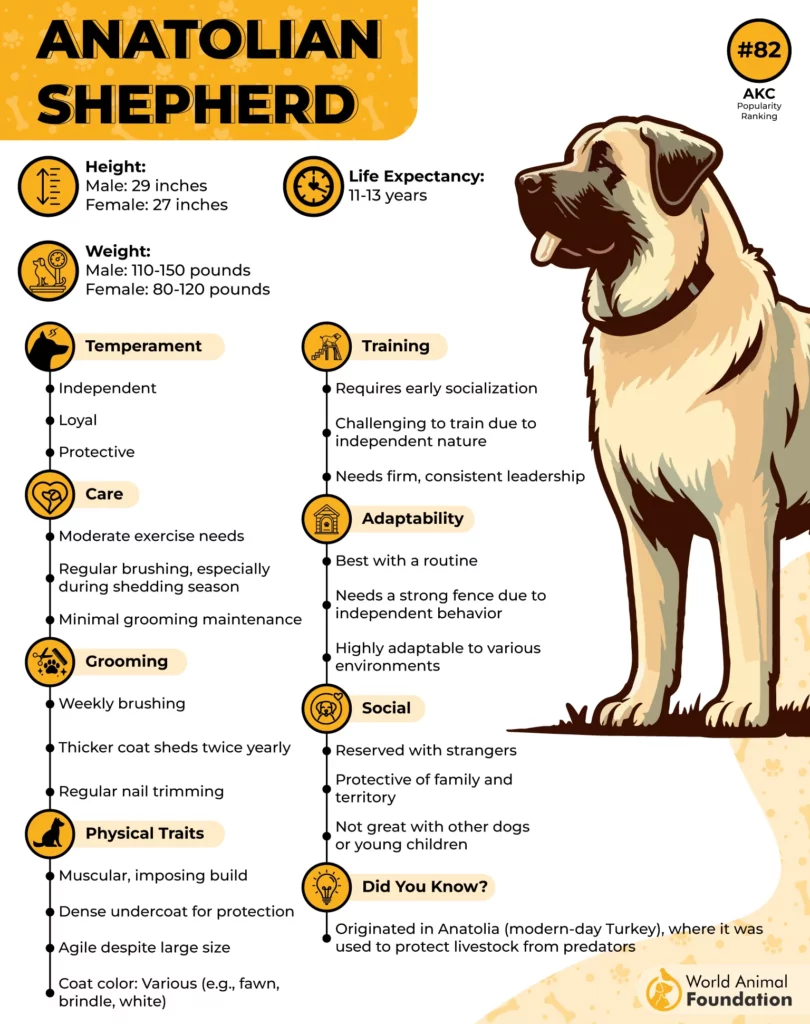
Minimal need for supervision
These shepherds are extremely independent, and it’s about understanding the job without being taught, as AKC claims. Anatolians are raised in working environments and learn from watching seasoned livestock guarding dogs in action. They grasp routines early and stick to them.
Suited to remote, rugged farms
With thick skin, heavy bones, and extreme weather tolerance, this breed thrives in tough conditions. While originally developed to protect sheep in Turkey, it now serves on ranches worldwide. It also keeps its distance from humans to stay alert.
3. Maremma Sheepdog
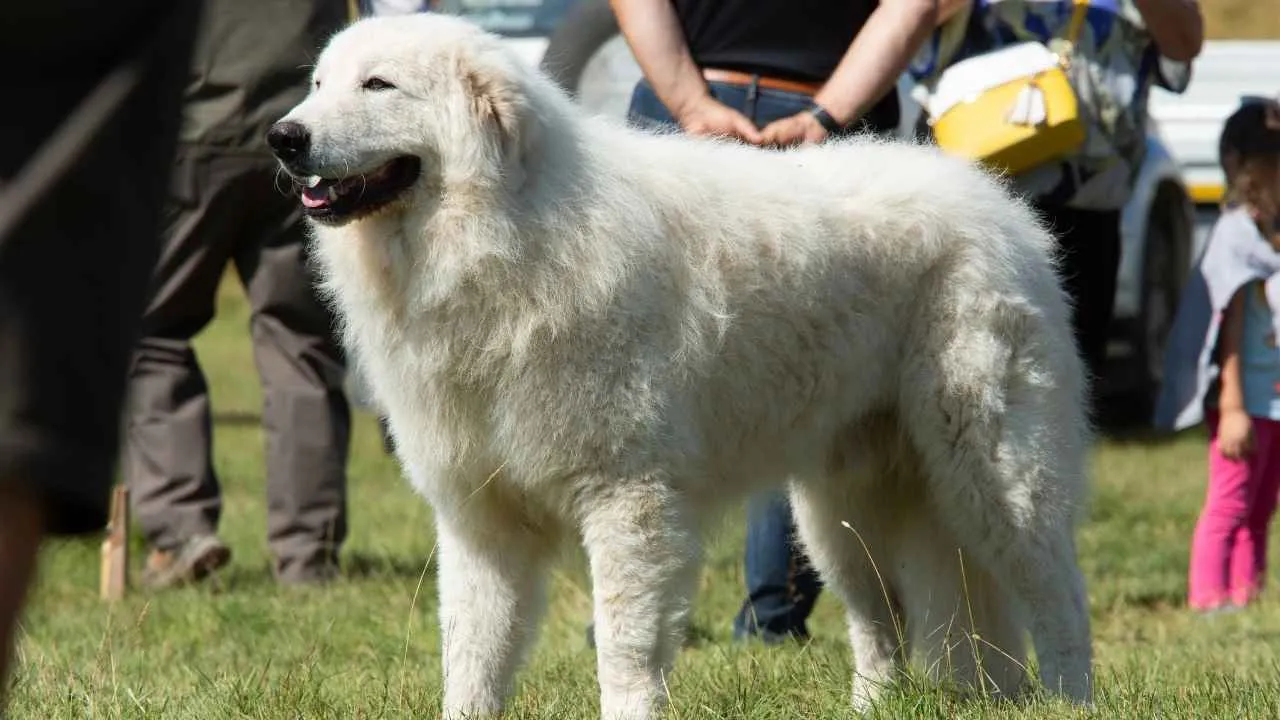
The Maremma Sheepdog doesn’t trail behind its flock—it leads from within. It naturally integrates into herd dynamics, behaving less like a pet and more like a senior member of the livestock. Its independent decision-making is shaped by centuries of solitary mountain work.
Strategic positioning instinct
This breed doesn’t just patrol aimlessly—it reads landscapes. Whether guarding a hilltop pasture or an open plain, it instinctively positions itself where it can scan for potential threats long before they get close. Movement isn’t reactive—it’s calculated.
Focused and unshakable
What sets this dog apart is its unshifting focus under pressure. It doesn’t get easily distracted, even during hours of uneventful guarding. Livestock protection dogs like the Maremma don’t need constant commands—they work by observation, not obedience.
Weather-resistant working dog
Its dense, weatherproof coat was built for bitter winters and unpredictable rain in remote Italian hills, as highlighted by Omlet UK. Even with minimal shelter, the Maremma remains on duty. It also coexists well with sheep, goats, and other livestock without needing supervision.
4. Kangal
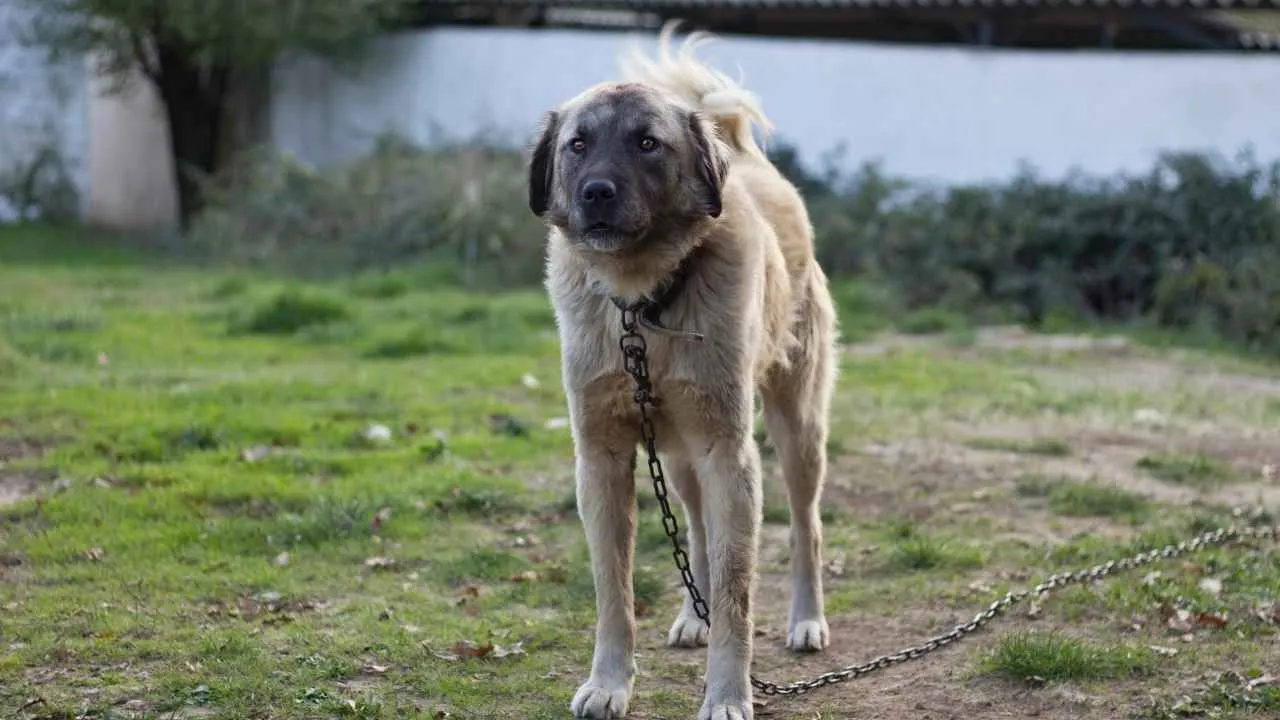
The Kangal is recognized for having one of the strongest bite forces recorded in any dog breed, measured at over 700 PSI. This power isn’t for show; it’s functional, helping to deter threats like wolves and even large cats. Few other livestock guardians match this level of physical deterrence.
Selective aggression, not recklessness
What makes the Kangal effective is not just strength, but judgment. It won’t react unless it senses real danger to its herd. That instinct for restraint makes it especially trusted in environments where overreaction could stress livestock.
Requires early, consistent training
Kangals aren’t for first-time owners. They need steady, firm training from an early age to develop impulse control and territory awareness. When raised with the herd from puppyhood, their protective instincts sharpen in exactly the way livestock guardians need.
Remote work without constant oversight
This breed excels in large, open landscapes where human supervision is limited. It adjusts its patrol based on flock behavior, not handler commands. Many seasoned owners value the Kangal for its ability to self-manage over vast pastures.
5. Tibetan Mastiff
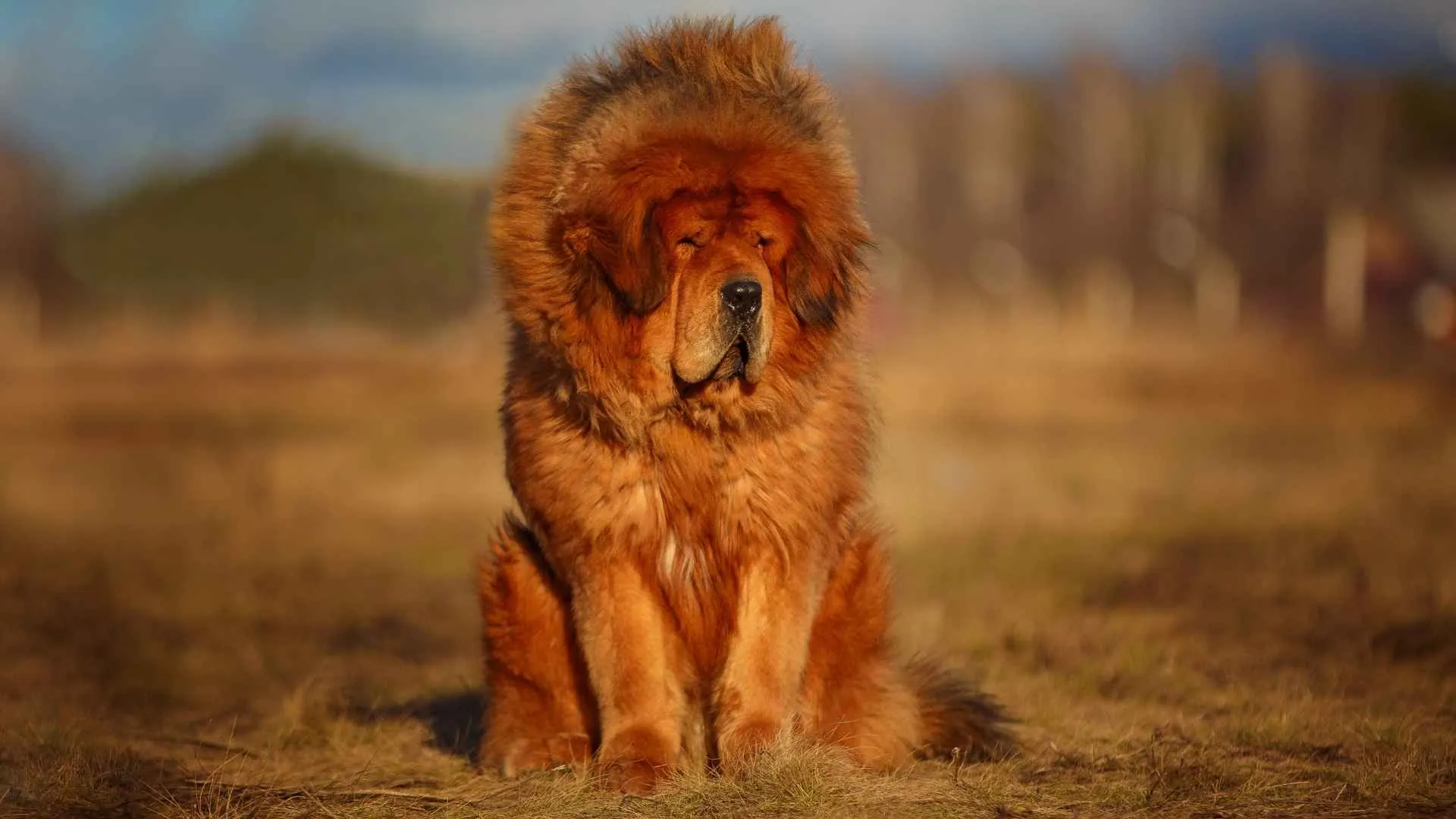
The Tibetan Mastiff developed in Himalayan villages where isolation shaped its temperament. It’s used to working in silence, detecting intruders before they get close. That instinct to assess before reacting makes it different from breeds that go straight to barking.
Guarding through sheer presence
Its sheer size and lion-like mane are often enough to deter threats before they escalate. Predators recognize it as a force and tend to stay back without confrontation. Farmers in mountainous regions rely on this physical intimidation more than chase behavior.
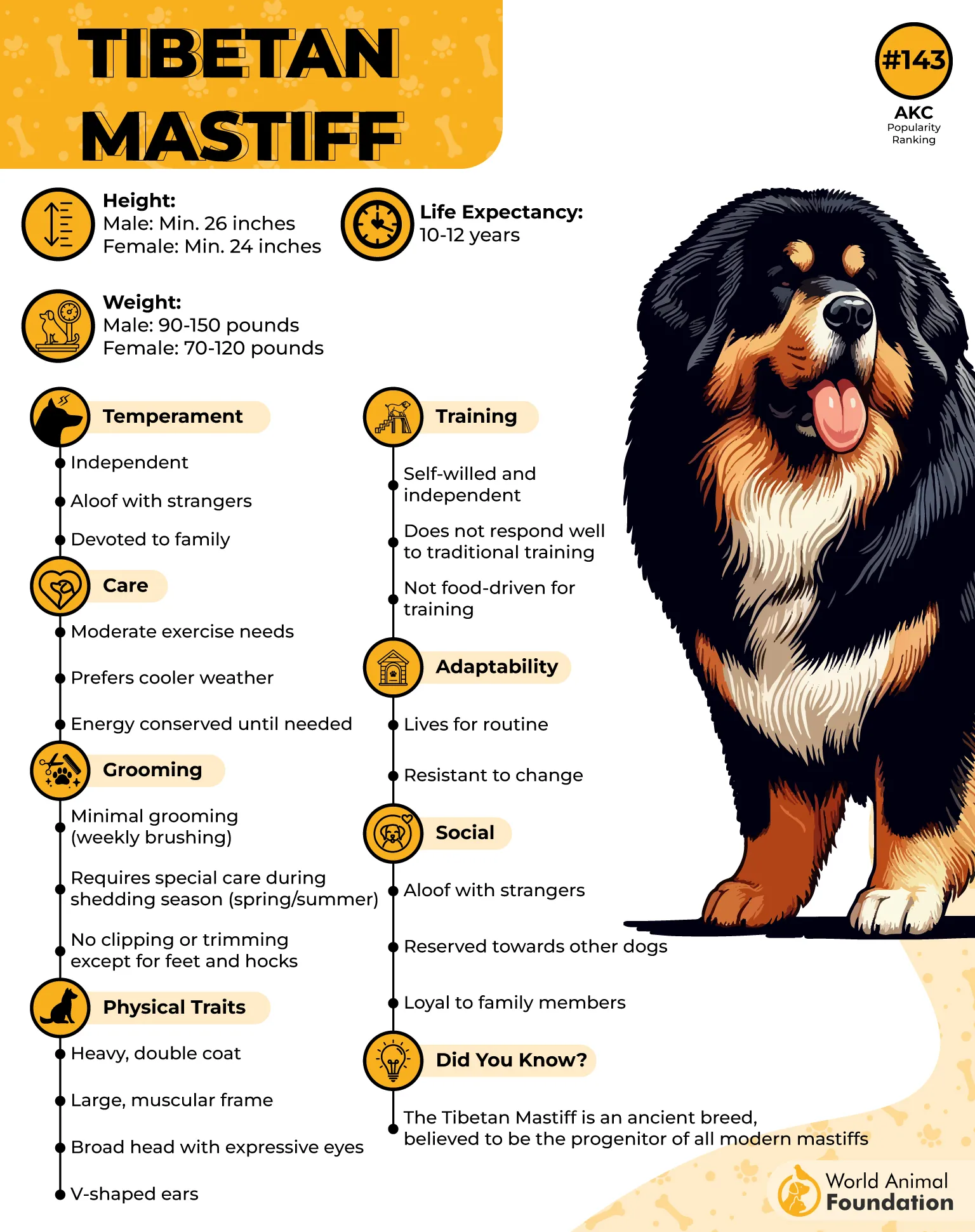
Protective but low-intervention
This breed doesn’t hover near livestock constantly — instead, it monitors from a distance. Its territorial instincts are sharp, but it only intervenes when it senses real danger. That watch-from-afar style makes it ideal for expansive, rugged grazing areas.
Seasonal rhythms and independence
The Tibetan Mastiff is more active at night and in colder months, when predators roam. It rests during the day, especially in warm climates, adapting its energy to the environment. That natural pacing helps it sustain long-term work without burnout or overstimulation.
6. Komondor
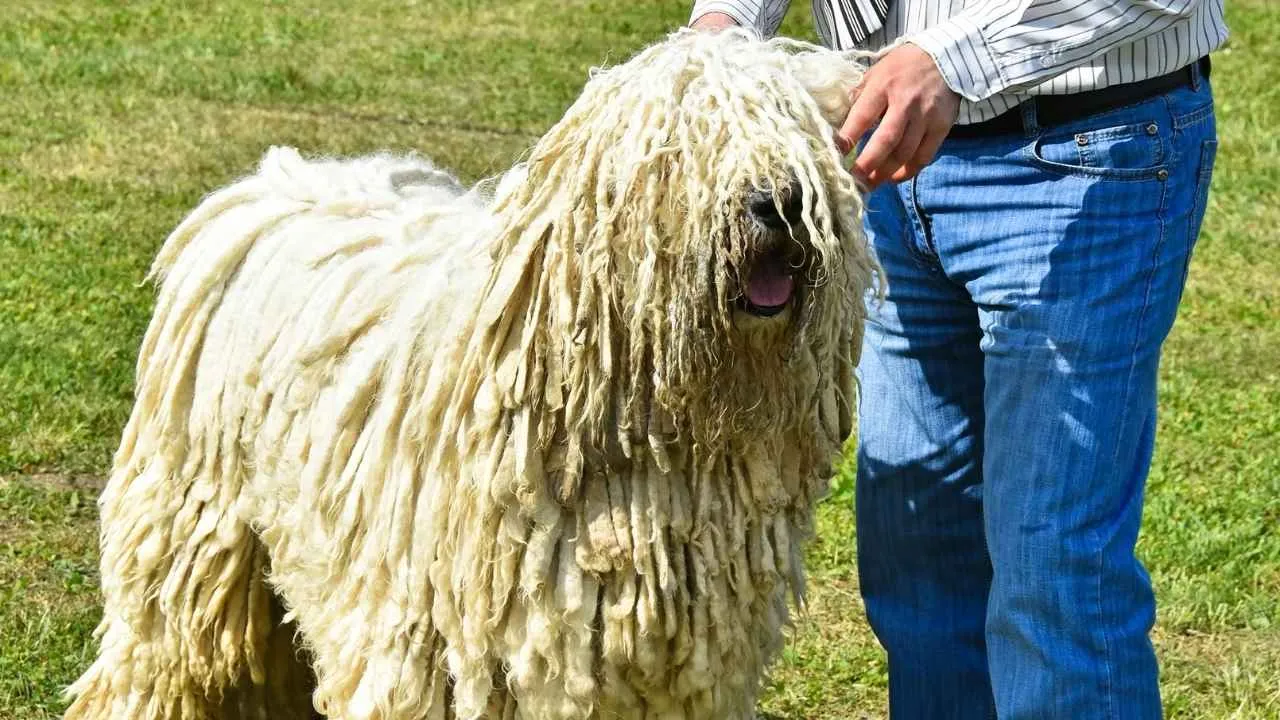
Komondors begin bonding with livestock while they’re still pups, not waiting until adulthood to step up. They naturally track herd movement and memorize terrain. This early exposure is key to their lifelong commitment.
Corded coat with a purpose
Their iconic corded coat is their armor. It cushions bites from predators and insulates against snow, rain, and sun, as mentioned in Showsight Magazine. The coat even camouflages them among the flock, helping them remain unnoticed.
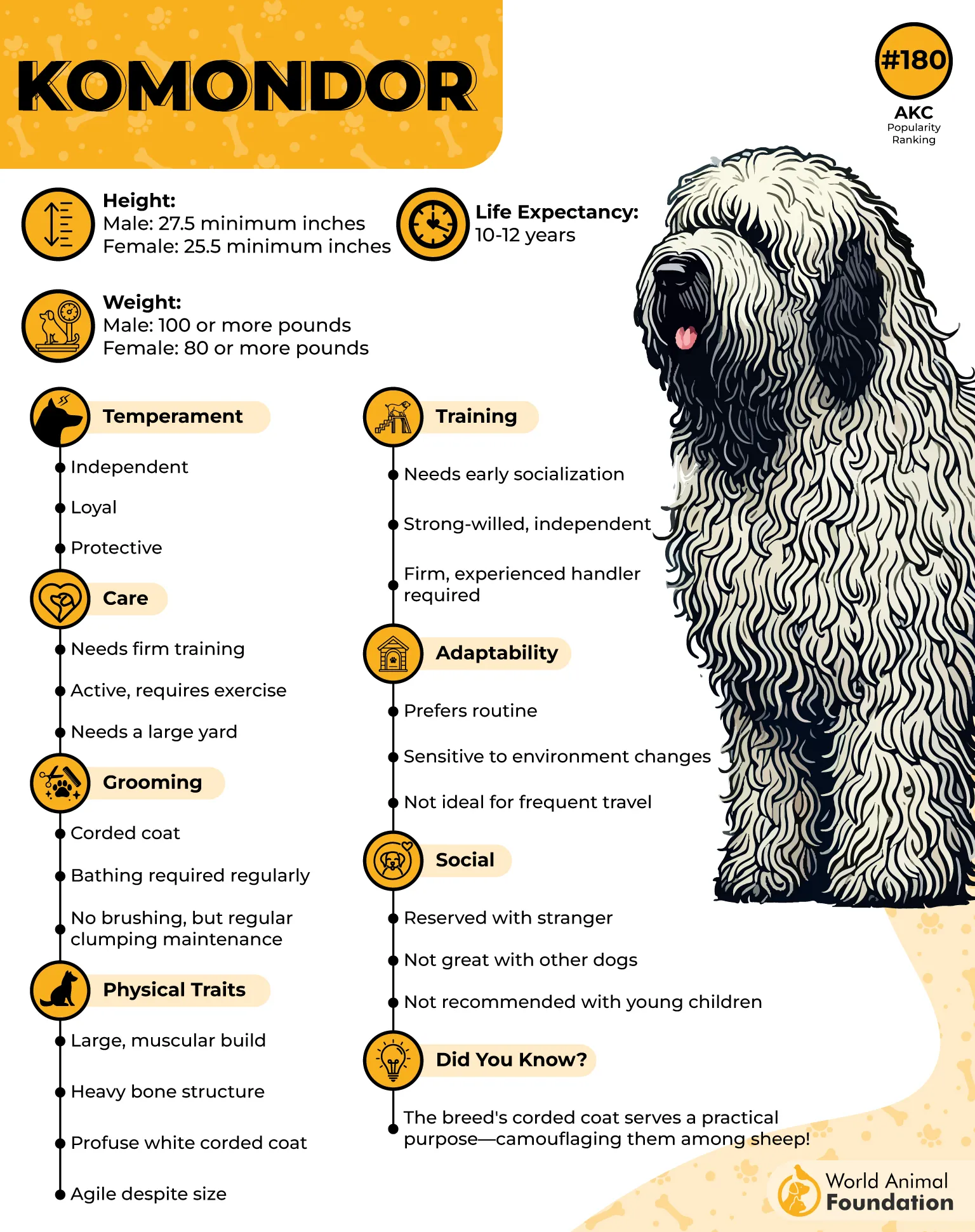
Makes decisions without instruction
This breed doesn’t depend on constant direction or presence from the owner. It analyzes threats on its own and responds instantly when something breaches its territory. Komondors often neutralize danger before the farmer even wakes.
Intensely territorial and observant
A Komondor is slow to trust anything unfamiliar, including people, vehicles, or sounds. Once bonded to its space and herd, its vigilance doesn’t waver. Even distant motion triggers focused tracking from this breed’s watchful eyes.
7. Kuvasz

The Kuvasz doesn’t just react — it evaluates. If a threat approaches the flock, it pauses to assess before acting with swift, calculated force. This trait allows it to avoid overreacting, especially in tense or fast-changing environments.
Works far from human supervision
This breed is comfortable making decisions miles from its handler. It patrols silently, with no need for fencing or oversight, even in wide-open pastures. Farmers trust it to protect isolated livestock for days at a time.
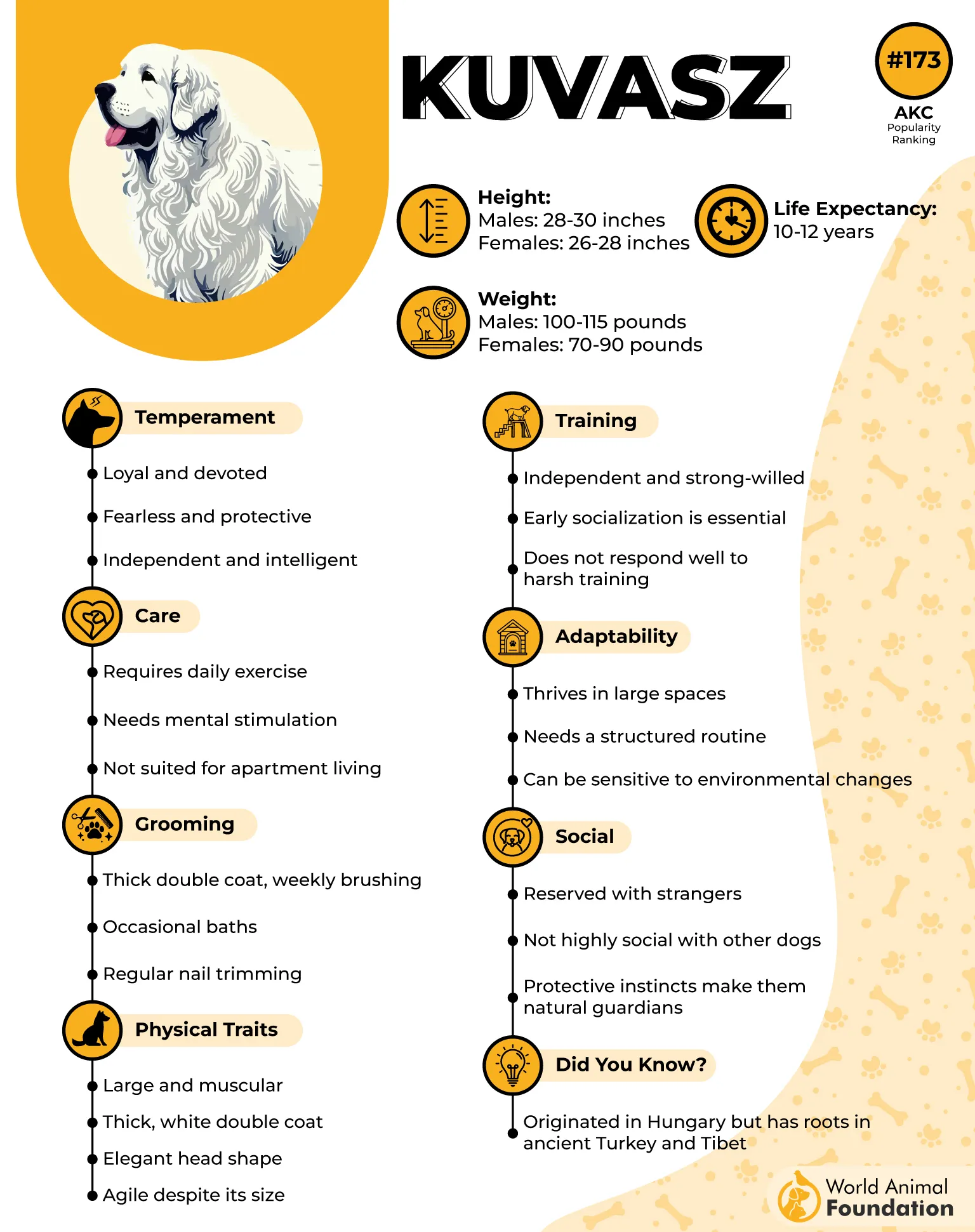
No-nonsense approach to predators
Kuvaszok don’t bluff. If a predator tests their boundary, they’ll confront it directly and without theatrics. Their size alone may deter some threats, but when force is required, their response is quick, direct, and final.
Strong instinct for herd structure
They don’t just guard the edges — they understand herd movement and positioning. A Kuvasz will place itself strategically depending on wind, terrain, or animal behavior. Its decisions often mirror those of a seasoned shepherd without being told.
Conclusion
Electric fencing can slow danger, but it won’t stand in front of it. That takes a dog. Not just any dog, but one chosen through a careful selection process—raised from puppies, shaped by the land, and trusted with your cattle, your flock, your property.
These livestock guardians aren’t aggressive by default; in fact, they’re often surprisingly gentle with young stock and even your family. But when the balance is threatened, they act.
Whether you’re protecting older dogs from confrontation or integrating independent thinkers into your herd, the right guardian makes the difference. They don’t need instructions. They don’t wait for backup. They know what to do because it’s in their blood.
If your farm life depends on security, connection, and calm, it’s time to consider the real solution: herding dogs that guard by instinct, lead with loyalty, and never clock out.


